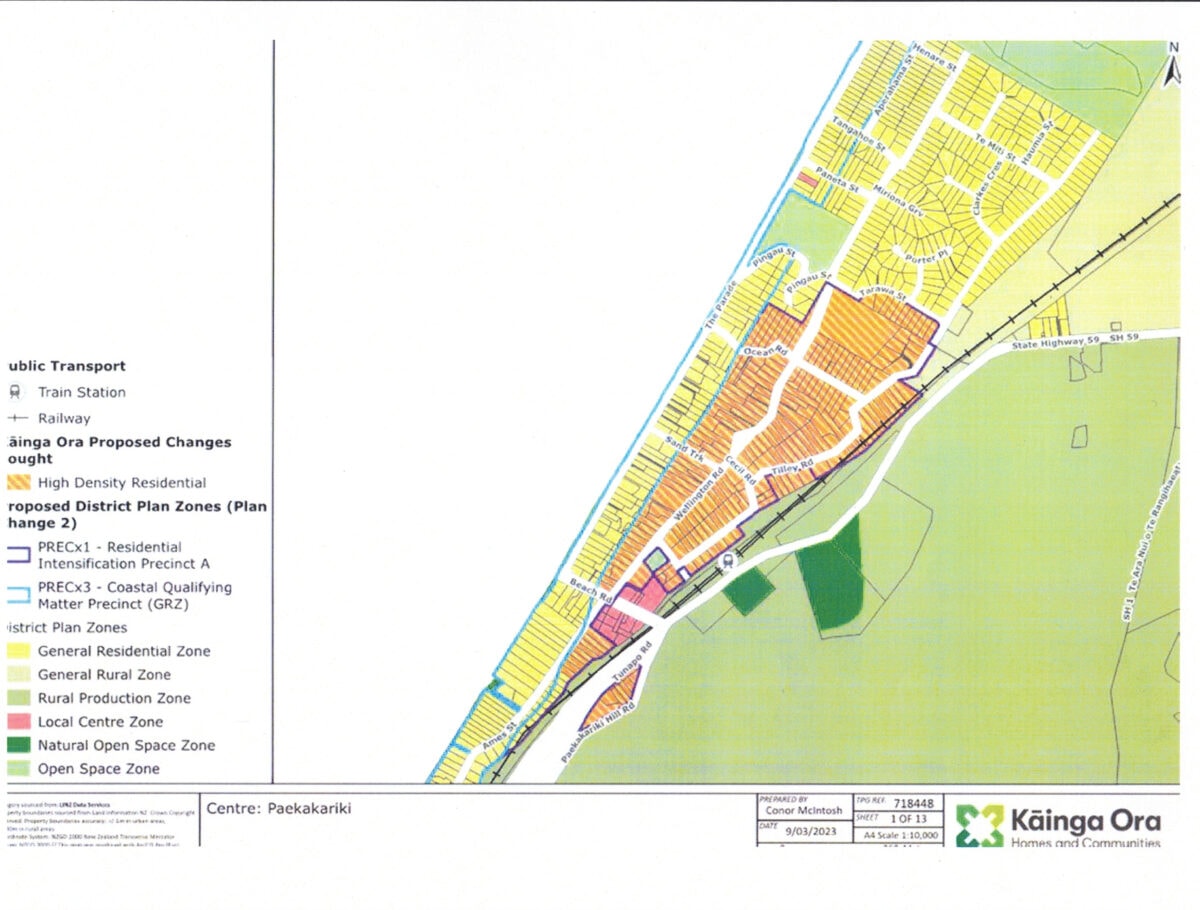If Paekākāriki’s population continues to grow, Dennis Rose argues that the village will have to convert to reticulated sewage rather than septic tanks. How Paekākāriki can accommodate more people and dwellings will also need to be considered.

The Labour government mandated height and density standards for housing (as incorporated in the KCDC planning framework 2023) invite developers and property owners to assume that little can stand in the way of significant housing intensification in Paekākāriki.
This raises questions about the long-standing planning assumption of an essentially static local population and about the capacity of Paekākāriki’s existing infrastructure, particularly sewage and water supply systems, to cope with large increases in numbers.
These issues need to be addressed by the Paekākāriki Community Board, by KCDC and by the community itself.
The Sense Partners population forecasts used by KCDC suggest an additional 56 dwellings in Paekākāriki across the 2023-2053 period (Mallon, November 2023). In sharp contrast, KCDC’s Independent Hearing Panel on intensification adopted Boffa Miskell’s estimate of 1,385 additional dwelling capacity in Paekākāriki. The AECOM engineering report, Paekākāriki, Peka Peka and Te Horo Wastewater Servicing Assessment, suggested intensification would enable the number of dwellings to increase from the present 725 to 2,580.
In their report on infrastructural constraints in Paekākāriki, Boffa Miskell concluded:
“The absence of a formalised sewer network would present a significant issue if looking to up densities in the area. The establishment of a new treatment plant or a major pump station and transmission main would likely be required. This would also trigger the establishment of a localised gravity connection network.
“The cost of reticulation and treatment plant upgrades is likely to be prohibitive to development. Confirmation is required on the adequacy of the water network, in particular storage requirements for the increased population.
“Localised flooding along the rail and in the vicinity of the town centre necessitates improved drainage in these areas required to achieve prescribed densities.”
In AECOM’s view, intensification on the scale envisaged would require sewage reticulation for the village along with a pumping station and pipeline north to the treatment plant with a capital cost in the range $67 million to $83 million. These are big numbers. $75 million, for example, equates to $103,448 per current dwelling or $29,070 per plan enabled dwelling.
If Paekākāriki’s population continues to grow the village will also have to convert to reticulated sewage rather than septic tanks. The Paekākāriki Community Board and KCDC will need to develop an idea of where that threshold lies and discuss how the necessary capital funding is to be secured.
In the early years of this century Paekākāriki shifted from primary reliance on stream flow to bore supply. Implicitly stream flows were judged insufficient to meet the needs of the village. The use of stream flow has recently been affected by the cutting of access tracks and extensive logging in the catchment area.
Reliance on bores raises three questions:
- What is the sustainable rate of extraction from the aquifer on which we currently rely?
- Is the quality of water in the aquifer being affected by developments in the catchment and in Paekākāriki itself?
- What is the population carrying capacity of the aquifer-based system that we now have?
Is this bore supply sufficient, or would a two or threefold population increase in the village force a radical investment programme analogous to that required for wastewater treatment?
The centrally mandated changes in height and density standards for housing in Paekākāriki permit a rate of population growth in the village that would place severe pressure on existing infrastructure. The Community Board, KCDC and the village community need to explore these issues and develop policy responses.
Three central issues need to be discussed:
- What do we see as a sensible population strategy for the village? The scale of the prospective increase is uncertain and largely beyond our control, but still needs thinking about. In particular should KCDC be tightening the height and density standards for housing?
- What are the elements of a policy to deal with significant increases in the need for wastewater and sewage treatment? What are the respective roles of the local community, KCDC, WRC, and central government? How is this to be financed?
- How do we ensure an adequate supply of potable water for a larger population? What are the physical options and again how is this work to be financed?
These issues are not going to go away. How best to develop discussion on these matters?
Suggestions are welcomed and I invite response: [email protected]
Paekākāriki.nz is a community-built, funded and run website. All funds go to weekly running costs, with huge amounts of professional work donated behind the scenes. If you can help financially, at a time when many supporting local businesses are hurting, we have launched a donation gateway.


